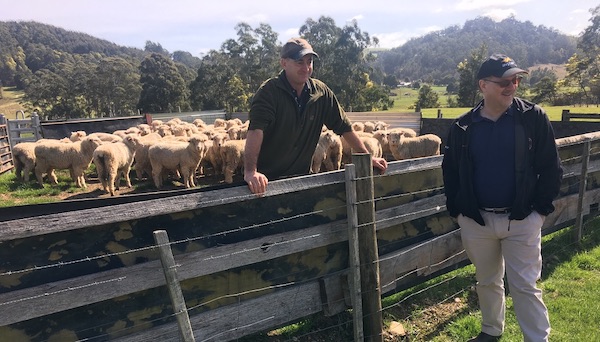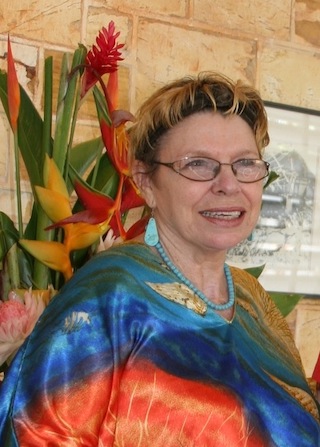Featured News
Newsroom
- Details
- In Redflow
- /
 TIEC Services founder Leith ElsegoodWest Australians are increasingly seeking the benefits of new-generation batteries as the State’s generous solar feed-in tariffs start to disappear, reports Redflow’s new WA partner Leith Elsegood.
TIEC Services founder Leith ElsegoodWest Australians are increasingly seeking the benefits of new-generation batteries as the State’s generous solar feed-in tariffs start to disappear, reports Redflow’s new WA partner Leith Elsegood.
WA homes that installed solar systems a decade ago are already losing the 40-cents per kilowatt-hour (KWh) feed-in tariff, introduced by the State Government to encourage the installation of solar panels. The 10-year feed-in tariff will end in 2021.
Since 1989, Mr Elsegood’s company, TIEC Services, has installed solar photovoltaic (PV) systems and energy storage systems throughout WA, at remote communities and, more recently, in high-end homes in the Perth metropolitan suburbs. TIEC Services recently signed up as installer of new-generation Redflow energy storage batteries for Perth and WA. Already, the company has won large, residential solar and energy storage contracts with Redflow’s ZBM2 batteries.
“The Redflow battery is ideal for WA conditions, handling the dry heat and the great distances in remote regions,” Mr Elsegood said.
- Details
- In Redflow
- /
 Simon Hackett (right)) at his property, The Vale, in north-west TasmaniaAustralian energy storage company Redflow Limited (ASX: RFX) has secured an order to immediately supply 27 of its ZBM2 zinc-bromine flow batteries for a Tasmanian farm owned by Simon Hackett.
Simon Hackett (right)) at his property, The Vale, in north-west TasmaniaAustralian energy storage company Redflow Limited (ASX: RFX) has secured an order to immediately supply 27 of its ZBM2 zinc-bromine flow batteries for a Tasmanian farm owned by Simon Hackett.
Mr Hackett - Redflow’s largest single shareholder - has designed an energy system to deliver energy independence for the 73-hectare property, The Vale (http://www.thevale.com.au), located in North West Tasmania. The Vale runs sheep and beef cattle, with ‘The Vale Lamb’ featuring on the menus of multiple hotels along the north-west Tasmanian coast. The farm, which is diversifying into additional forms of agriculture, is also exploring an expansion into eco-tourism operations.
The energy harvesting, storage and distribution system at The Vale will use an initial deployment of 27 ZBM2 batteries, storing as much as 270 kilowatt-hours (kWh) of energy, interfaced to a large fault-tolerant cluster of 12 x Victron Quattro 48/15000 inverter/chargers. The system will harvest renewable energy from a 100-kilowatt peak (kWp) ground-mounted array of photovoltaic (PV) solar panels, with scope for future expansion.
- Details
- In Albinism
- /
 Albinism Fellowship members including AFA President Elizabeth Beales (second from right)About 100 individuals and family members affected by albinism will gather in Adelaide this weekend for a national conference about the causes, challenges and achievements of this often-misunderstood genetic condition.
Albinism Fellowship members including AFA President Elizabeth Beales (second from right)About 100 individuals and family members affected by albinism will gather in Adelaide this weekend for a national conference about the causes, challenges and achievements of this often-misunderstood genetic condition.
International and Australian speakers at the eighth national Albinism Conference will dispel common misconceptions about albinism which range from “all albinos have pink eyes” to the unlikelihood of an albino assassin as portrayed in The Da Vinci Code.
Albinism, a genetic condition caused by a lack of pigment in the skin, hair and eyes, is linked to pale skin, white hair and poor eyesight, often in the range of legal blindness. With an occurrence of one in 17,000, Australia has an estimated 1500 persons with albinism.
Albinism Fellowship of Australia President Elizabeth Beales said the truth about people with albinism was actually much more interesting than the ridiculous myths that abound. “Dan Brown’s novel, The Da Vinci Code, was just plain stupid – most people with albinism have very poor eyesight, which really limits your ability to succeed as an assassin,” she said.
- Details
- In Denise Goodfellow
- /
 Denise GoodfellowNT residents are calling for urgent action to fight a fire-prone grass introduced to Australia as cattle food that’s devastating native plants and animals in the Top End and threatening the lives of locals and tourists this Dry Season.
Denise GoodfellowNT residents are calling for urgent action to fight a fire-prone grass introduced to Australia as cattle food that’s devastating native plants and animals in the Top End and threatening the lives of locals and tourists this Dry Season.
Gamba grass (Andropogon gayanus) is a tall African grass that the Australian cattle industry has embraced for its ability to support many more cattle than native pasture and its tolerance of tropical seasons. Gamba grass is highly flammable, growing in clumps as tall as four metres with stems as thick as bamboo.
Australian eco-tourism expert and long-time NT resident Denise Goodfellow describes the gamba grass infestations of the Top End as “verging on the catastrophic”. "While the NT Government has put much effort into fighting gamba grass, we need to recognise that it’s more than a nuisance weed – it is a disaster waiting to happen,” she warns.
More News...
- GigCity network to expand to Whyalla and Mount Gambier (30 July 2019)
- UltraServe Commerce debuts to reduce costs and time-to-market for midsize enterprise digital commerce initiatives (25 June 2019)
- Hawera High School celebrates its 100th anniversary this year (20 June 2019)
- Persons with Albinism celebrate world albinism day by standing in solidarity with their counterparts in Africa (12 June 2019)
- Global retailers deploy Citrus to disrupt $200B digital advertising industry (03 June 2019)
- Soul Energy partners with Redflow for infrastructure rollouts (21 May 2019)
- UltraServe announces Strategic Collaboration Agreement with Amazon Web Services (21 May 2019)
- Redflow expands into China (17 May 2019)
- Chauffeur-driven Tesla company reaches Melbourne (07 May 2019)
- Hackett Foundation backs SA-based world leader in climate change measurement (15 April 2019)
Off the Cuff

Simon Hackett speaks about Formula E racing on ABC Radio Adelaide
Australian renewable energy investor Simon Hackett last week spoke to Radio ABC Adelaide's Afternoons host Sonya Feldhoff about the benefits for replacing the cancelled Adelaide 500 motor race with a...
Read more
Seven simple steps for mental health in time of coronavirus
After the summer bushfires, the coronavirus pandemic and associated economic shutdown, “unprecedented” must be a standout favourite for Macquarie Dictionary’s Word of the Year for 2020. For the first time...
Read more
John Harris talks (a bit) about International Albinism Awareness Day on ABC Radio
John Harris, who has the honorary role of PR guy for the Albinism Fellowship of Australia, was interviewed by Peter Goers on the Evenings show of ABC Radio Adelaide on...
Read more
Start-ups are key to the future of everything
Nigel Lake, Executive Chair of global business advisory firm Pottinger, will tell this week's Myriad start-ups festival in Brisbane, running May 16-19, that Australia needs start-ups to protect its prosperity. Pottinger...
Read moreContact
Impress Media Australia
P: +61 8 8431 4000
E: john@impress.com.au
W: www.impress.com.au
Street:
Impress Media Australia
313 Portrush Road,
Norwood SA 5067
Click here for our location
Postal:
Impress Media Australia
Box 95, Kensington Park
South Australia 5068







